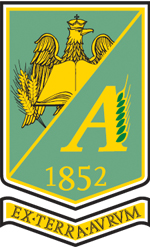Published in Scientific Papers. Series A. Agronomy, Vol. LXVI, Issue 2
Written by Niculae DINCĂ, Adrian Nicușor FILIP, Ana-Maria STANCIU, Andreea Antonia GEORGESCU, Corina Elena POPESCU, Daniela AVRAM, Cristina MIHAESCU, Lavinia BURULEANU, Daniel DUNEA
The objective of this study was to evaluate the forage yield and chemical composition of six variants including two alfalfa cultivars, a bird’s-foot trefoil cultivar, and three grass mixtures selected as valuable biological material for potential riparian grasslands’ renovation. The experiments were carried out on plots in Dragomiresti village located near Dambovita River riparian area. One level of fertilization (120 g m-2) was considered for each variant. The plant material had high concentrations of dry matter, crude protein, neutral detergent fiber, and phosphorus, respectively. All the fertilized samples exhibited higher concentrations of dry matter, nitrates, and phosphorus than the corresponding non-fertilized samples. High concentrations of water-soluble carbohydrates were determined for alfalfa which showed also the smallest amount of neutral detergent fiber. The maximum ADF content was found in the fertilized Valahia alfalfa cultivar and the non-fertilized complex grass mixture. Regarding the potential for riparian grassland renovation, we can conclude that the Valahia alfalfa cultivar and the complex grass mixture with five species performed better in terms of forage yield and overall quality.
[Read full article] [Citation]




